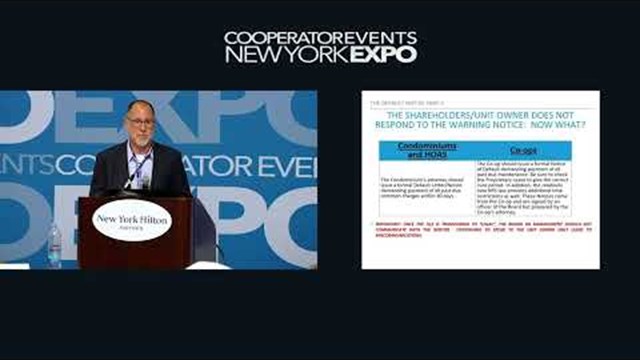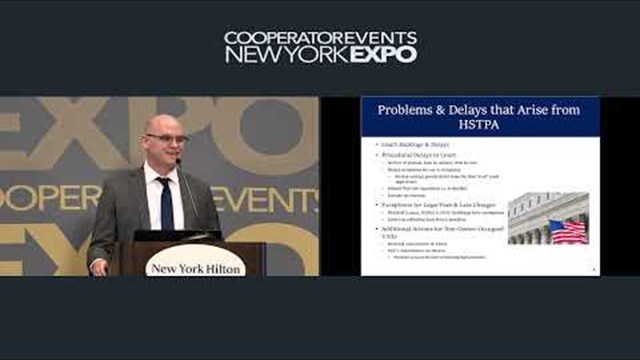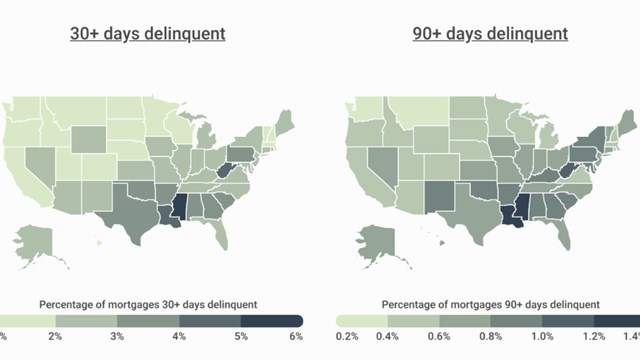While many of the co-ops, condos, and HOAs that struggled to stay solvent during the Great Recession of the mid-aughts have largely recovered, the truth is that regardless of the overall economic climate, there will always be buildings and associations that fall on hard times, or find themselves in financial distress.
Tanks a Lot
When Joseph Balzamo, President of Alliance Property Management in Morristown, New Jersey, began managing an old converted garden apartment property in North Jersey, the old oil tanks that were buried in the yard weren’t a problem. That is, until the tanks ruptured. “The board said the tanks were 2,000 gallon oil tanks,” says Balzamo, “but it turned out that they were not one, but two 4,000 gallon tanks.”
This underground spill caused a major environmental issue that needed to be cleaned up – on the association’s dime. “To get EPA clearance, they had to clean out everything,” Balzamo continues. The problem was massive, the stakes were high, and there was no way the community could afford to undertake the project without emptying its reserves and leveling a ruinous assessment on every unit owner in the building.
To make matters worse, no bank would approve a loan to fund the clean-up project. “For what amount?” asks Balzamo. “Who knew how much money it was going to ultimately cost for all of the repairs? You have to keep receding the earth until it gets to a certain parts-per-whatever reading that the EPA says is acceptable.”
While all this was going on, most of the 35 unit owners were still living on the property – but eight owners simply walked away from their homes. Another six stayed on the property, but refused to pay maintenance fees. The problem was quickly spiraling.
“In the meantime, the rest of the property is trying to sustain itself,” Balzamo continues. “Financially, it was impossible to deal with – and it was a bad situation aesthetically too, because half the property was all dug up.”
Financial Firestorms
Sometimes it’s not a physical problem that starts a disastrous chain of events in motion, but rather an administrative one. Linda D’Amico, a licensed real estate agent with Coach Realtors in East Islip, has seen situations where the management company was to blame for a property tumbling into distressed territory.
In one such case, “The property was dirty and [the management] didn’t fix things, so everybody stopped paying their maintenance fees,” D’Amico says. “When someone stops paying their maintenance, they stop paying [the association’s] taxes, too. Even if the guy next door was paying their mortgage like clockwork, it won’t matter. If enough people go down, the whole building’s going to go down.”
D’Amico explains that once a building is showing signs of financial distress, it is the property manager’s responsibility to evaluate why homeowners aren’t paying their fees. “Are people not paying because they’re upset about something?” she asks. “Are they not paying because they can’t afford it? The manager has to talk to the bank and figure out why these people are just not paying their loans because either they don’t have a job or lost their job, or got sick, or just don’t feel like doing it anymore.”
It might not seem like a lot, but in a small 50-unit building, for example, even just five homeowners who do not pay their maintenance fees can ultimately become a financial burden to a building’s bottom line.
Pay for What?
After Hurricane Sandy hit the Northeast in 2012, there were a number of condo and HOA communities that remained so damaged for so long that they were essentially put out of commission.
According to Adam Batista, Compliance Manager for Rose Associates, a real estate developer and operator in New York City, residents displaced by severe structural damage “will want to move back in, but the amount of work needed to get a damaged roof up to par could take a year or more. Displaced owners might be in hotels, or they might be staying with relatives – but they are still responsible for making their condo payments. They don’t always make them. It’s definitely a tough situation.”
This is why if a building has suffered physical damage, the board and/or management must reach out to a restoration company for help before things get worse. “It depends on the situation, but it should be done immediately,” says Batista. “For example, with flooding from pipe damage or storms, you’ve got to have the restoration company in there immediately to remove water damage, clear out debris, and head off potential mold issues.”
Next, explains Batista, the building needs to be stabilized. “That’s when the Department of Buildings will want to make sure the integrity of the building – the floor, walls and roof – are in good condition. Structural stability inspections and reports are in-depth, and can require engineers and architects and can take a very long time.”
In the meantime, Batista says that managing homeowners’ expectations and helping them to understand the severity of the issue and gain access is a challenge. “It’s a very sensitive subject, and it should be analyzed on a case-by-case basis, but first and foremost, the hazards need to be identified and defined to the residents, so that they understand why their access might be limited. It’s for their own protection.”
Turning Things Around
When residents – for whatever reason – stop paying their monthly fees, “You have two choices,” says Balzamo. “You could try taking them to court, but collecting the fees is very difficult. The courts will tell you that the other homeowners have to make up the difference. Instead, what the manager should try to do is legally push the homeowners out and then, hopefully, you get better buyers into the property to help bring the value back up. Those are really your only two options.”
Of course, if only one or two homeowners are falling into financial distress, D’Amico explains that it is an asset manager, not a property manager, who would handle a short sale or foreclosure of their particular properties.
“A foreclosure usually gets to the point where people don’t pay their loan, but in a judicial foreclosure state, it takes a long time before the bank forecloses and puts a padlock on it and they’re out the door,” she says. “In other states, the deed goes back to the bank, and within a year they’re out of there.”
While all this is being adjudicated, the community is losing vital maintenance fee income, and the cycle of distress continues.
Unfortunately, D’Amico said that distressed properties – and even just financially distressed homeowners – are not going away any time soon.
“New York State is about fourth in the country as far as short sales and foreclosures are concerned,” she says. “In 2006, at the height of the market, everybody used their house like an ATM. They refinanced, and now they can’t pay that second loan. However, because New York is a judicial foreclosure state, people who own condos know that they can live there for four, five or even 10 years before the padlock is put on the front door. They just wait it out.”
Squatter Hell
Having homeowners on the property who were just waiting it out was exactly what Balzamo was dealing with. He called it “hell,” from a management perspective. “It was the worst thing imaginable, because people are essentially squatting there – and even though they don’t pay the maintenance fees, they’re still expecting their essential services,” he says. “But they live in a condominium where there are 35 units that are basically decreasing the value of the entire property, and you can’t even afford to provide essential services.”
In addition, if a management company fails to provide those essential services to residents – even non-paying ones – the company can be fined. Unfortunately, in the case of the distressed property Balzamo was managing (which he is no longer involved with) the only way that the bank was able to sell the property was through a cash-only deal.
To help managers and other real estate pros learn more about managing distressed properties, D’Amico currently teaches a class through the National Association of Realtors (NAR) about foreclosure alternatives and handling homeowners who are struggling to pay called “Short Sales and Foreclosure Resource (SFR).” It’s a one-day elective course that is applied towards an ABR designation. The course helps to evaluate all options for distressed homeowners and identify the components of an effective short-sale package.
Though all communities will inevitably go through rough financial and/or managerial patches now and again, some bounce back faster than others – and unfortunately, some don’t bounce back at all. Maximizing your condo or HOA’s chances of making a full recovery relies on a solid, competent and responsive board-management team who isn’t afraid to make tough decisions when necessary, and who can communicate the reasons for those decisions to their residents.
Lisa Iannucci is a freelance writer and published author, and a frequent contributor to The Cooperator.










Leave a Comment